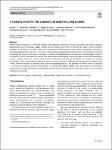Item Infomation
Full metadata record
| DC Field | Value | Language |
|---|---|---|
| dc.contributor.author | Fan, Mo | - |
| dc.contributor.author | Fabio Marco, Monetti | - |
| dc.contributor.author | Agajan, Torayev | - |
| dc.date.accessioned | 2023-04-17T02:05:27Z | - |
| dc.date.available | 2023-04-17T02:05:27Z | - |
| dc.date.issued | 2023 | - |
| dc.identifier.uri | https://link.springer.com/article/10.1007/s00170-023-10910-7 | - |
| dc.identifier.uri | https://dlib.phenikaa-uni.edu.vn/handle/PNK/7968 | - |
| dc.description | CC BY | vi |
| dc.description.abstract | Modern manufacturing has to cope with dynamic and changing circumstances. Market fluctuations, the effects caused by unpredictable material shortages, highly variable product demand, and worker availability all require system robustness, flexibility, and resilience. To adapt to these new requirements, manufacturers should consider investigating, investing in, and implementing system autonomy. Autonomy is being adopted in multiple industrial contexts, but divergences arise when formalizing the concept of autonomous systems. To develop an implementation of autonomous manufacturing systems, it is essential to specify what autonomy means, how autonomous manufacturing systems are different from other autonomous systems, and how autonomous manufacturing systems are identified and achieved through the main features and enabling technologies. | vi |
| dc.language.iso | en | vi |
| dc.publisher | Springer | vi |
| dc.subject | dynamic and changing circumstances | vi |
| dc.subject | concept of autonomous systems | vi |
| dc.title | A maturity model for the autonomy of manufacturing systems | vi |
| dc.type | Book | vi |
| Appears in Collections | ||
| OER - Kỹ thuật điện; Điện tử - Viễn thông | ||
Files in This Item:

